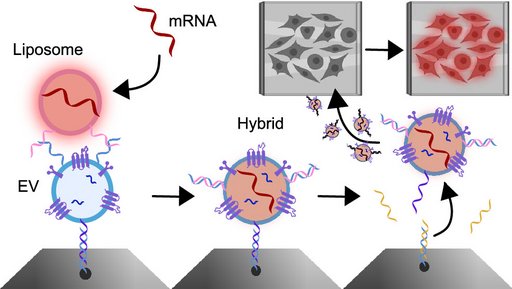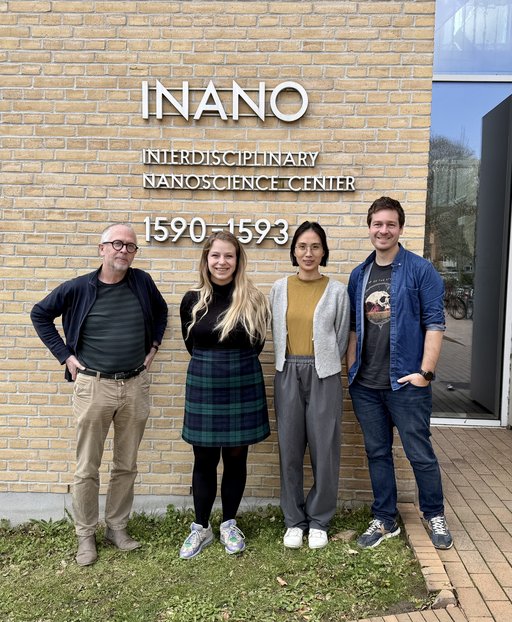Programmable mRNA encapsulation in natural particles
Researchers at Aarhus University and the University of Southern Denmark have innovated a method to merge liposomes with natural extracellular vesicles, creating a more efficient and less toxic mRNA delivery system than traditional lipid nanoparticles used in COVID-19 vaccines. This breakthrough paves the way for advancements in natural medicine delivery.
During the pandemic, we've all heard about mRNA vaccines and possibly also about lipid nanoparticles. Lipid nanoparticles are small synthetic particles that protect and carry mRNA into our bodies and have been a revolutionary tool. However, despite groundbreaking results, there is room for improvement. There's a catch with these small synthetic particles—they can trigger an immune response against themselves. Consequently, a team of researchers from iNANO at Aarhus University, in collaboration with the University of Southern Denmark, has set out to improve the delivery method.
They found inspiration in nature itself. If one is to effectively deliver something into our cells, much can be learned by studying how our body itself communicates and transfers material from cell to cell. Here one encounters so-called extracellular vesicles. They can transfer both proteins and RNA, making them prime candidates for exploitation. However, it remains a challenge to incorporate large RNA molecules like mRNA into these extracellular vesicles without damaging them.
To address this issue, researchers have invented a brand new method for fusing liposomes—small fat bubbles with mRNA inside—with natural extracellular vesicles. The fusion of the two vesicles occurs through the melting of DNA molecules placed on the outside of the particles. This allows specific particles to be programmed into the DNA for fusion. The manufactured hybrid particles with encapsulated mRNA have proven to be much more effective at delivering mRNA into the cells, thereby allowing the cells to convert the mRNA into protein. What's interesting about the study is that the new nanoparticles are more effective and less toxic to cells than traditional lipid nanoparticles used in coronavirus vaccines.
Thus, this new method could be a step towards manufacturing more natural medicine in the future.
About the research
Study type:
Experimental molecular biology.
External funding:
This work was funded by the Villum Foundation by BioNEC (grant 18333) for P.M.G.L., and S.V. N.K. was funded by the Novo Nordisk Foundation grant No. NNF 21OC0071957. J.K. was funded by the Danish National Research Foundation grant No. 135 (CellPAT) and Novo Nordisk Foundation grant No. NNF23OC0081177. M.G.M. was funded by Lundbeck Foundation grant No. R380-2021-1393, and J.V. was funded by Lundbeck Foundation grant No. R346-2020-1999. P.S. was funded by Novo Nordisk Foundation grant No. NNF20OC0064187, and Y.Y. was supported by DFF grant No. 9039-00306B and Omiics ApS.
Conflicts of interest:
The authors declare no competing interests.
Link to the scientific article:
Programmable RNA Loading of Extracellular Vesicles with Toehold-Release Purification
Mette Galsgaard Malle, Ping Song, Philipp M. G. Löffler, Nazmie Kalisi, Yan Yan, Julián Valero, Stefan Vogel, and Jørgen Kjems.
JACS, 26 April 2024, https://pubs.acs.org/doi/10.1021/jacs.3c13123
Contact information:
Professor Jørgen Kjems
Aarhus University
Department of Molecular Biology & Genetics and Interdisciplinary Nanoscience Centre (iNANO)
Email: jk@mbg.au.dk

